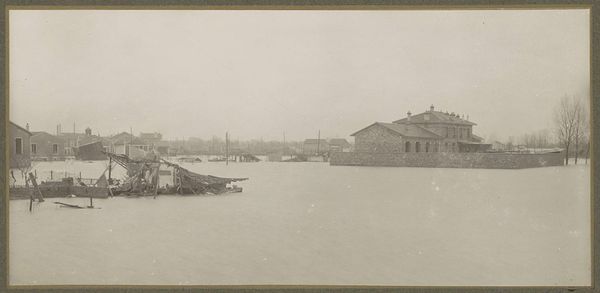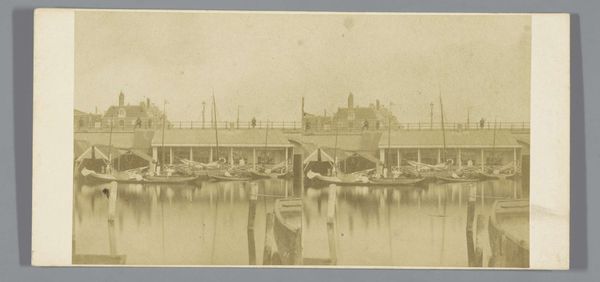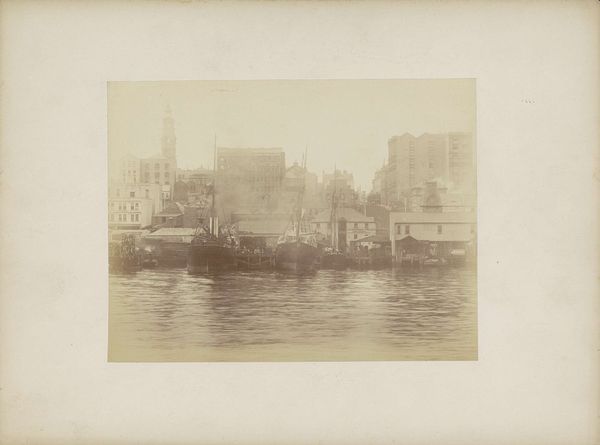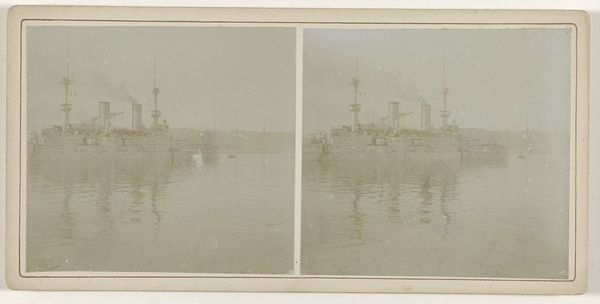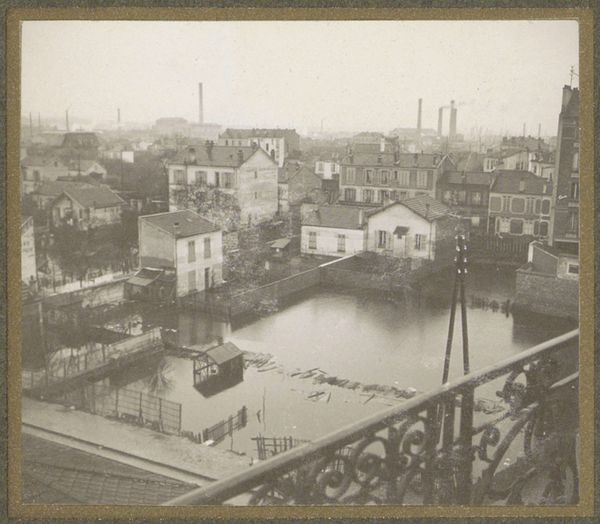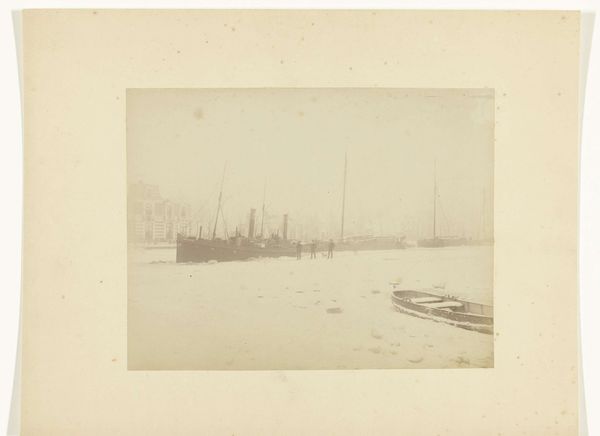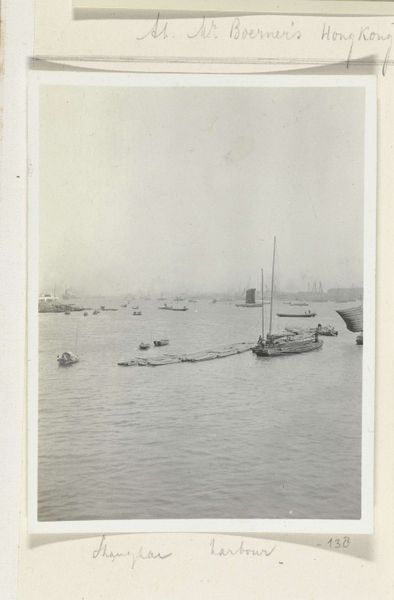
Dimensions: height 112 mm, width 160 mm
Copyright: Rijks Museum: Open Domain
Curator: This is "Panoramisch uitzicht op een ondergelopen buitenwijk van Parijs," or "Panoramic view of a flooded suburb of Paris," a photographic print created around 1910-1911 by G. Dangereux. The scene is… well, it's quite something. Editor: Bleak, almost Biblical in scale. The monochromatic palette amplifies the sense of loss. It’s visually striking, but the story it tells is sobering. Curator: The water dominates everything, reflecting the sky and blurring the lines between land and… well, new land? It certainly speaks of disrupted order. Water, as a symbolic force, is quite powerful; a deluge often representing cleansing or, conversely, chaos. I wonder, what societal anxieties might this imagery have tapped into at the time? Editor: I immediately think about the practicalities, you know? How did Dangereux create this print? Was it a singular photograph, or a composite? Given the time period, I'm curious about the technical constraints and ingenuity involved. It makes me think about the cost to those displaced, the labor needed for repair, the changed material landscape. Curator: And yet, within that framework of devastation, Dangereux captures the inhabitants attempting to maintain some semblance of normalcy, don't you think? Observe the men in the boat, apparently traveling down a street. It conveys the spirit of humanity enduring a catastrophe. There's also something about the mirroring and echoing quality of the composition which reinforces a sense of reflection, of processing this disaster. Editor: Precisely. Consider the paper stock, the printing process. What does it mean to reproduce a disaster, making it available for mass consumption, almost like a form of dark tourism? The image becomes a commodity itself, even as it depicts lives fundamentally upended by material conditions. Curator: That gives me a perspective shift. Before I was mired in this idea of symbolic anxieties, but now considering its production—what of Dangereux's anxieties too? As an artist? Perhaps they were drawn to such stark imagery due to their own uncertainties about life amid rapid industrial change. Editor: I'm left thinking about how quickly any semblance of 'normalcy' can wash away. A compelling, though somber, documentation.
Comments
No comments
Be the first to comment and join the conversation on the ultimate creative platform.
